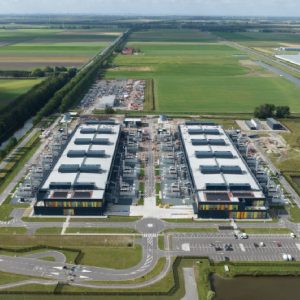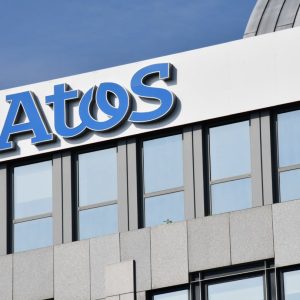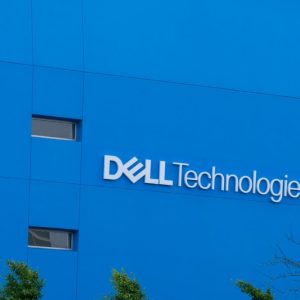
VMware CEO Pat Gelsinger on stage at VMworld Europe 2012
One complaint CBR regularly hears from CIOs and CEOs is that while virtualisation can be a game changer, the management capabilities of many products mean keeping control of virtualised and cloud environments is often a difficult task.
Attendees of CBR’s Dining Clubs have told us that the ease with which users can, for example, spin up their own virtual machines (VMs) can result in a company quickly losing control of the environment, with little or no idea of exactly what they have.
And that, of course, is exactly what virtualisation and cloud computing is supposed to help IT get away from. But how did the industry get into this state? VMware, which has done more than many other companies to help propel cloud and virtualisation technology into the enterprise, believes it is just a reflection of the startling pace with which virtualisation has been adopted.
Speaking to CBR at the company’s VMworld Europe conference back in 2011, CTO Steve Herrod said: "The good news is that virtualisation has enabled companies to move faster than ever. The bad news is that virtualisation has enabled companies to move faster than ever.
"We’ve partnered with a number of existing management tools, but we haven’t seen them keep up with what’s happening in these environments. They haven’t been able to be as dynamic and really track things; they’ve been used to the traditional CMDB [configuration management database] model," he added. "Every time a new platform comes out, it is unfortunately a pattern that the platform is ahead of the management tools, so it’s not surprising it takes time to catch up."
Now, a year on from that comment, VMware believes the management capabilities in cloud and virtual environments have caught up. Herrod’s evident dissatisfaction with the tools VMware had used through partnerships meant the company went solo and developed and bought its own management capabilities.
Unveiled at the company’s VMworld event in San Francisco in August 2012, VMware subsequently used the European leg of the conference, held recently in Barcelona, to announce a raft of updates to vCloud Suite 5.1. The new features added were hailed by VMware CEO Pat Gelsinger as "the missing piece" of its software-defined data centre strategy.
The company defines that as having all the infrastructure virtualised and delivered as a service and where control of the data centre is entirely automated by software.
"The IT industry is in a fundamental state of change, and this wave of disruption we see is being led by cloud computing," said Gelsinger. "This is fundamentally changing every aspect of how we build and operate data centres, not just at the technology level but also at the IT level. It has been in a reactive state, where a large part of the budget is being spent on just keeping things going. Now we’re moving into a proactive state."
Essentially, vCloud Suite 5.1 is a combination of a number of different VMware technologies pulled together under a new heading – the ‘5.1’ in the title refers to the fact it is based on vSphere 5.1, VMware says.
Perhaps most significant is the integration of the automation technology VMware landed when it acquired DynamicOps earlier in 2012. The DynamicOps technology is being integrated into vCloud as vCloud Automation Centre. VMware says this will enable what it calls policy-based provisioning. Rather than waiting for IT to approve requests, the application can automatically check against existing policies and provide approval.

VMware CTO Steve Herrod
The application can work across public and private clouds, as well as physical infrastructure and non-VMware deployments.
Part of this includes the introduction of management capabilities for multiple hypervisors, including offerings from rivals such as Microsoft’s Hyper-V. It was introduced by Herrod, who said the company "recognises that there are other hypervisors that are popping up and being used for testing or something else. For the first time you can manage all hypervisors from one place. We want to have a single pane of glass to be able to look at all different parts of your data centre."
Interestingly, this is something former CEO Paul Maritz seemed to rule out when he introduced vSphere 5 in 2011, but the company has obviously changed its tune. Perhaps that is a response to demands from customers; recent figures from
analyst house Gartner suggest many businesses are keen on heterogeneous virtualisation management, as the number of vendors offering these capabilities increases, and the difference in quality between them decreases.
According to its research, 33% of businesses believe heterogeneous VM management will be "somewhat" important by 2015, with a further 46% saying it will be "very" important. Just 21% think it will not be important. Despite these figures, Gartner analyst Thomas Bittman still claims the firm viewed it as "more of a marketing move than a valuable feature".
Other updates to vCloud Suite 5.1 include vFabric Application Director 5.0. This provides pre-approved operating system, middleware and application components to speed up the deployment of applications and the subsequent management throughout its life cycle. This update expands support to include all Microsoft-packaged applications, such as SharePoint, Exchange and SQL Server.
Next up is VMware Business Management Suite 7.5, which enables IT to monitor and analyse the performance and cost of the company’s entire cloud environment, including the infrastructure, application and end-user devices, VMware says. This update introduces a benchmarking module, which lets IT compare its performance with preset industry metrics.
VMware has also updated Cloud Connector. Version 2.0 enables businesses to transfer virtual machines between public and private vCloud environments as well as syncing data between the two.
Finally, updates to vCenter Operations Management Suite 5.6 improve its ability to offer insight and analysis into exactly what is occurring in a company’s cloud environment. It also offers best practice advice, says VMware.
Echoing Gelsinger’s comments, Jon Cairns, pre-sales leadership for VMware in NEMEA, tells CBR that the management part of the company’s cloud and virtualisation platform is now complete.
"Virtualisation three or four years ago delivered a lot of Capex and Opex savings for businesses," he says. "But the next stage of the evolution is how we enable IT to move from being a cost centre to being a true value creator. That’s what businesses are asking of their IT departments, while keeping budgets the same or even cutting them.
"To make that step-change you need to look at the management layer; how do you create a management layer that’s much more agile and efficient and lets you take advantage of the benefits of cloud computing?" He adds that the updates announced at VMworld Europe "completed our vision of the software-defined data centre. The management part is completed."
Cairns also offers his own explanation as to why the management capabilities may have taken so long to catch up with the technological capabilities. "Eight or nine years ago traditional management vendors all came from a physical infrastructure background, so I think the whole approach of how to manage that infrastructure had to change. Until virtualisation began to be adopted in anger there probably weren’t suitable tools out there to manage at scale."
It’s not just VMware that is pushing forward on the management side of things. Dell recently announced updates to its Desktop as a Service (DaaS) platform, which included offering the service from its UK data centre, based in Slough.
The DaaS platform is hosted and managed by Dell, leaving the customers to look after just the management and provisioning of individual desktops, including operating system, applications and user profiles. Speaking to CBR, David Angwin, marketing director, Dell Wyse EMEA, says DaaS allows customers to look after what is important to them, rather than worrying about IT.
"Dell hosts and manages the virtual desktop and the infrastructure. It lets users manage the images on the individual desktop they deliver to the end-users. It’s for customers looking to have a hands-off approach," he says. "We think the industry is heading that way – organisations can focus on what they do best and leave the IT to someone else to manage."
Gartner reckons that what we are seeing in the virtualisation/cloud management space at the moment is a natural evolution. As cloud environments are built on to a virtualised foundation, pure-play virtualisation management is becoming more and more niche. Instead, Gartner says, it is being absorbed into IT operations management (ITOM) or cloud management platform (CMP) tools.
"Based on our research with end-user organisations through inquiry, polls, and feedback during presentations, we see IT leaders moving from managing virtual machines to managing services that are delivered from the whole virtual infrastructure and treated as a single resource pool as they move toward implementing cloud," says Gartner analyst Aneel Lakhani.
"This, in turn, is driving interest in cloud management platforms and away from pure-play virtualisation management tools. IT leaders already expect those virtualisation management capabilities to come with their ITOM tools, CMP tools, or bundled with their virtualisation platform," Lakhani adds.
Another report from Gartner says that advances from the likes of Microsoft, Citrix, Parallels, Oracle and Red Hat over the past few years have closed the gap between VMware and its challengers, which can only be a good thing for customers.
For example, Microsoft corporate vice president Brad Anderson, speaking at Microsoft’s Management Summit, said good virtualisation technology is pointless without good management capabilities to go alongside it.
"Our IT customers have told us that their focus is helping their businesses deliver the critical applications that will strengthen their bottom line, while maintaining necessary control and compliance," he said. "Virtualisation and server consolidation are important steps toward cloud computing, but it’s essential to have management tools that provide intelligence about how the apps themselves are doing, not just management of virtual machine black boxes."
His comments related to the release of System Center 2012, Microsoft’s IT management platform. That platform enables companies to build up their private cloud infrastructure using Microsoft and other vendors’ platforms and virtualisation technologies. That openness in terms of building platforms and the subsequent management is growing, as vendors accept that businesses are incredibly unlikely to have virtualisation technology from just a single vendor.
So as the management capabilities of virtualised environments grow, just how far can the automation go? Will we get to the stage where the software side of the equation needs little or no human interaction? If so, what happens to all those admins currently working on managing virtualised environments?
"It’s not about getting rid of people," says Cairns, "it is enabling IT to spend their budget more appropriately. Maybe those people don’t have to keep the lights on anymore; they can be used on more innovative, value-generating activities."






